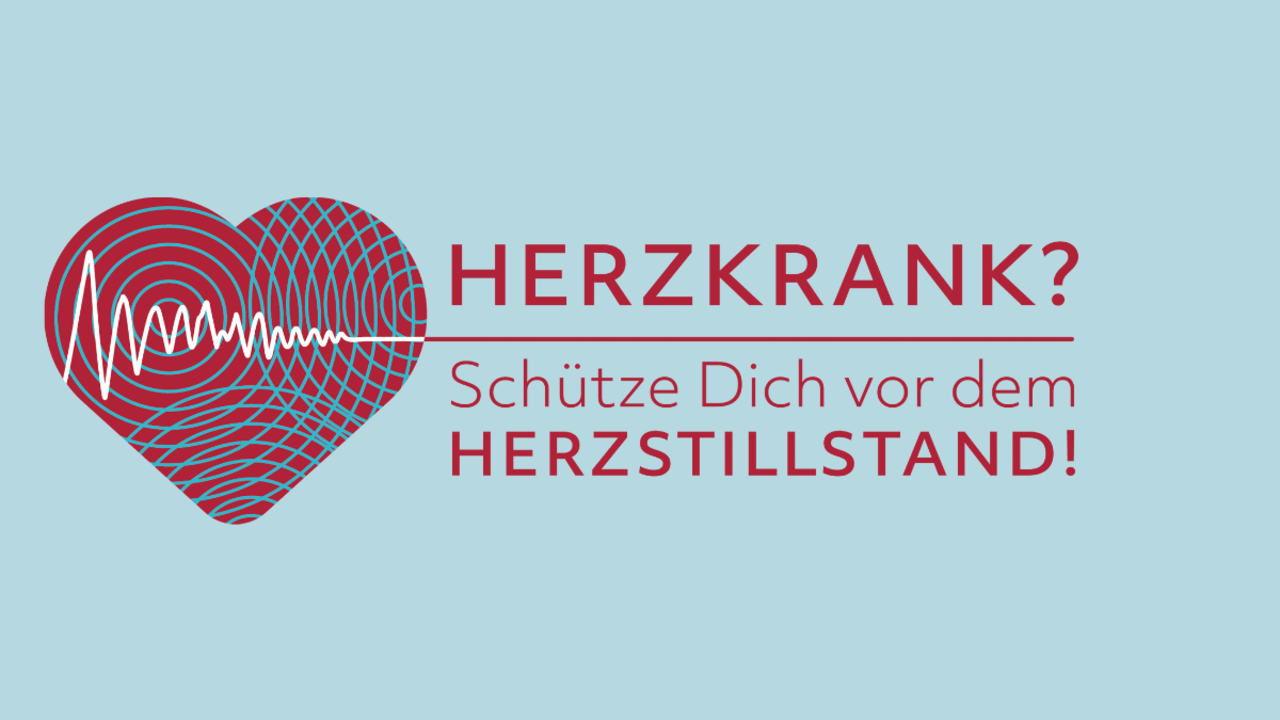Sudden cardiac death is the result of acute cardiovascular failure. Every year, around 65,000 people in Germany fall victim to sudden cardiac death. It is the result of a malignant cardiac arrhythmia (usually ventricular fibrillation), which leads to cardiac arrest within a few seconds. Only through successful resuscitation can such a cardiac arrest be survived. "The probability of survival of a person in cardiac arrest depends largely on how early the witnesses of a cardiac arrest perform resuscitation," emphasises heart specialist Professor Heribert Schunkert, Deputy Chairman of the German Heart Foundation and DZHK scientist on the occasion of the nationwide Heart Weeks, which are being held under the motto "Heart sick? Protect yourself from cardiac arrest!"
Every minute counts! - Immediate chest compressions are essential for survival
For every minute that passes before resuscitation, the probability of survival is reduced by around 10 per cent. A cardiac arrest leads to sudden cardiac death within a few minutes if an emergency doctor (112) is not called immediately and resuscitation measures are not started. "The faster resuscitation is started with chest compressions, the greater the chance that the patient will survive," emphasises Prof. Schunkert. It takes an ambulance an average of nine minutes to reach the scene of an emergency. Until then, the pressure massage serves to bridge the blood circulation in order to supply the brain and other organs with oxygen. "If resuscitation measures are delayed until the ambulance arrives with the emergency doctor, this means death or a life with usually severe permanent brain damage for those affected after just a few minutes," warns Prof. Schunkert, Medical Director of the Clinic for Cardiovascular Diseases at the German Heart Centre Munich and DZHK scientist. Rescuers at the scene - often relatives, friends or people close to the victim - must therefore start resuscitation measures immediately after the emergency call (112) has been made: This means that after checking and calling (112), the steps of pressing and shocking (AED) must be carried out.
Resuscitation in the event of sudden cardiac arrest
Check, call, press, shock - always in this order. This is the crucial basis for successful lay resuscitation:
In cardiac arrest, the heart stops beating or just "twitches", known as ventricular fibrillation (over 300 heartbeats per minute). The circulation collapses in a matter of seconds. The blood pressure drops completely "to zero". The heart muscle, brain and other organs are no longer supplied with blood, are damaged and increasingly destroyed over time.
1. Check
Check by hearing, seeing and feeling whether the person lying on the floor is still breathing (no longer than 10 seconds). Can a breath of air be felt coming from the mouth or is the chest rising and falling?
2. Call
112 is the medical emergency number throughout Europe without an area code. Give name, exact address and symptoms. If there are two first aiders on site, the one who is not busy checking consciousness and breathing, is calling.
3. Press
If the victim is not breathing, start chest compressions immediately. To do this, place the ball of your hand on the centre of the chest, both hands on top of each other. Press down continuously 100-120 times/minute with outstretched arms on the sternum about 5-6 centimetres deep in the direction of the spine. Songs such as the Bee Gees hit "Stayin' alive" or other songs with a tempo of 100-120 bpm can provide mental support to help you stay in time. "There is no right or wrong when it comes to chest compressions, the main thing is to do something," explains Prof Dr Thomas Voigtländer, Chairman of the German Heart Foundation.
4. Shock
If there are two rescuers on site, one continues the chest compressions without interruption while the other fetches an automated external defibrillator (AED) if he knows where one is nearby. The device is self-explanatory and guides rescuers precisely with an integrated voice module. Ideally, the AED can restore the heart to its natural rhythm and resume pumping independently.
Always maintain resuscitation measures!
Professional help
It is essential to press and - if necessary - shock (AED) until the emergency services take over further emergency medical care of the patient or the victim shows signs of life. In Germany, it usually takes between 8-10 minutes for the emergency services to arrive, depending on the federal state. The ambulance service initiates further measures and the hospital continues the treatment after the patient has been admitted.
A major problem: lack of knowledge
Every year, 67 to 170 out of every 100,000 people worldwide suffer a cardiac arrest outside a hospital. This makes sudden cardiac death one of the most common causes of death worldwide. Only 2 to 20 per cent of patients survive. One of the reasons for this is that people are very reluctant to take the necessary measures. The necessary knowledge is often lacking.
Additional information about the Heart Weeks, important information about sudden cardiac death, helpful videos and the free 160-page information brochure can be found here: Heart Weeks 2023
Source: idw press release (in German only)


